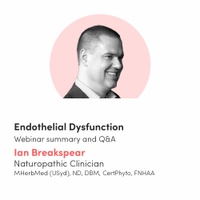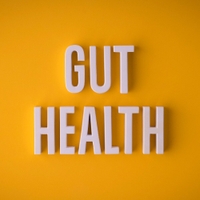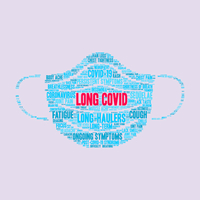Presented 23/08/22. Please note only attendees are eligible for a CPE certificate. (Download the presentation handout)
The World Health Organisation defines post-acute sequelae of COVID-19 (Long COVID) as “[a] condition that occurs in individuals with a history of probable or confirmed SARS CoV-2 infection, usually three months from the onset of COVID-19 with symptoms and effects that last for at least two months and cannot be explained by an alternative diagnosis. Common symptoms include fatigue, shortness of breath, cognitive dysfunction but also others and generally have an impact on everyday functioning. Symptoms may be new onset following initial recovery from an acute COVID-19 episode or persist from the initial illness. Symptoms may also fluctuate or relapse over time."
Research definitions of Long COVID have been developed through a Delphi process for adults and for children. (NSW Government agency for clinical innovation. COVID-19 critical intelligence unit. [cited 2022 August 28].
Webinar overview
- Thousands report they have not fully recovered from COVID-19
- SARS-CoV-2 injures the immune system leaving ‘memory’ of the infection and affects immune cell function
- Damages haematopoietic stem cells
- Creates long term inflammatory phenotype
- Influences mitochondrial and immune system dysfunction
Further discussion on
- Patients at risk
- Trajectory of Long COVID-19
- Pathophysiology of Long COVID-19
- Addressing the targets
- Case study
Approach for ‘addressing the targets’ include:
- Deactivating the virus via antivirals
- Modulating cellular repair mechanism via addressing micro clotting fibrinogen formation
- Modulating cellular defence via immune function, addressing inflammation and mast cell activation
- Reducing viral pathological cellular process through clearing debris via the lymph
- Restoring function including heart and lung function, and health and wellbeing
- Restoring micronutrients
- Supporting health and wellbeing via lifestyle changes including fasting, diet, community and sleep
Key take aways
- Long COVID-19 influences mitochondrial and immune system dysfunction
- One in seven COVID-19 patients still symptomatic at 12 weeks
- Those with a healthy lifestyle, diet and environment, are less at risk of SARS-type illness
- Herbal antifibrotics include Centella asiatica and Ginkgo biloba
- Fibrinolytic herbs dissolve thrombi in the arterial tissue thereby can restore blood supply to ischaemic tissue limiting necrosis
- Long COVID stimulates the innate immunity
- Low Histamine diet to reduce activation of vascular response of mast cells immune cell recruitment
- Palmitoylethanolamide (PEA) can prevent mast cell pulmonary inflammation and fibrosis in SARS-CoV-2 infection
- Taking up to 500mg of quercetin 30 to 40 minutes before eating can substantially reduce histamine release during meals
- The spike protein activates and causes cellular debris via inflammasomes. Consider Galium aparine (Cleavers) and Phytolacca decandra (poke root)
- Endogenous CoQ10, platelet mitochondrial respiratory chain function and oxidative phosphorylation are reduced in Long COVID
- Trophorestoratives for the lungs and heart include Inula racemosa (Elecampane) and Verbascum Thapsus (Mullien)
- The nutritional environment is key to resolving illness along with a lack (or excess) nutrient intake
- One night of reduced sleep can disturb the innate immune function disrupt circadian regulation and increase inflammatory cytokines and reduce CD4+, CD8+, and natural killer [NK] cells
- In a study of over 8,000 adults, adults who were socially engaged had a lower C-reactive protein, fibrinogen, and white blood cells count
Outstanding questions from the webinar
Is there a specific supplement or nutrient that you have found helps patients who are experiencing dizziness/ vertigo?
Dizziness can be caused by problems with ear crystals, virus, Eustachian tube dysfunction, drug induced, positional vertigo, labrynthitis, vascular issues, spinal issues and migraine! The best advice I can give you is find out the cause. If you are referring to dizziness in long covid I would suggest PEA – remember that it takes a while for this supplement to work, along with phosphatidylcholine to repair cell signalling. A good reference on this can be found here.
What is the product to help with vitamin d receptor issue please?
Eagle Bio D. With the absorption and utilisation of vitamin D effective liver function is required. Bio D is calcifediol which bypasses hydroxylation in the liver, a metabolic step required by colecalciferol which may be dysfunctional in some patients. If a patient finds it hard to increase blood levels of vitamin D with colecalciferol D3, Bio D demonstrates rapid increases. However please be aware that vitamin D receptor dysfunction may be due to an imbalance in the microbiome (particularly if there are autoimmune diseases in the patient) or a gene polymorphism and as a consequence of insulin resistance. It would be good to check your patients gut health and blood glucose control as well as increasing vitamin D in the blood.
My client suffered from Psoriasis all her life. She is 50 and NBWS COVID 2months ago. Strangely her Psoriasis disappeared, but she has now very suddenly developed a very aggressive liver cancer and was put on chemo to stop it from interfering with other organs. She is convinced it is to do with COVID. Could it be Psoriasis of the liver, rather than of skin cells in an auto-immune way? She hates how the chemo affects her and they don't know whether it will even work. She has lost a lot of weight, and this is worse with the chemo. She is not allowed any vitamins except vitamin C. What do you suggest? Would you consider giving Thuja or Sulphur as a sycotic miasm?
I am sorry to hear about your patient, this is very complex and without a full background I am not confident I can give you a solid answer. I will be the first to admit I am not the most competent homoeopath. Perhaps get in touch with some of the best homeopaths for a discussion through homoeopathyoz or contact through their Facebook page.
Have you had anyone suffering from interstitial cystitis after contracting COVID?
No I have not. But as we know viruses tend to attack our weakest system/organ, and there are ACE2 receptors in the bladder so it is possible, please see frontiers link here. Along with the format given in the webinar I would be looking at managing blood glucose control as ACE2 receptors are dysregulated in dysfunctional glucose/renal metabolism function. it makes sense to balance blood glucose to assist with management of the condition. A low sugar MedDiet and specific urinary probiotics have helped my patients with interstitial cystitis.
Any guidance for young athletic going through long COVID - strong chest pain radiating through different part of the body, irregular heart rate, despite x-ray and ultrasound came back normal? Any experience with that?
Does this patient have afibrillation? If so this is common in long COVID, and I do have experience with afibrillation in long COVID. I would suggest working with a cardiologist to look deeper into this to ensure no other areas for concern have been overlooked. ACE2 receptors moderate blood flow and heart rate, therefore these symptoms seem plausible as an after effect of the virus. The protocol discussed in the webinar will assist, however an organ trophorestorative such as Crategus oxyacantha (Hawthorn) which has potent polyphenols would be helpful. This herb is an acetylcholinesterase inhibitor which increases cholinergic transmission improving the autonomic response of the cardiovascular system and is beneficial in cardiovascular disease/weakness/dysfunction. Always conduct an interaction check to ensure no contraindications with herbal therapeutics and medications.
Download the presentation handout
Please refer to presentation slides for full reference list.
Disclaimer: This is not intended to be a substitute for professional medical advice and should not be relied on as health or personal advice.
Consult a qualified healthcare provider before starting any therapy. Application of clinical judgement is necessary.






